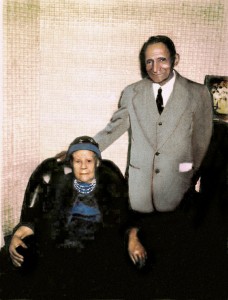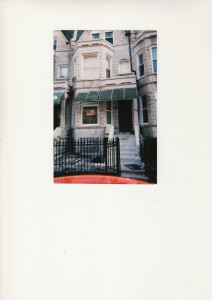September is Richard Durham’s birth month. He would have been 98 years old on September 6th.
To honor Durham’s birth and to celebrate the publication of Word Warrior: Richard Durham, Radio, and Freedom this month, I wanted to feature the following excerpts from two early chapters from in book.
Enjoy!
Rural Wandering
“Izzy!”
Silence.
“Izzy, where are you!?”
Only the whisper of the wind moving through magnolia leaves disturbed the quiet.
Izzy Durham was nowhere to be found. Again. The energetic toddler was exploring as much of the land around his family’s house as his young legs would take him. But one of his older sisters was not amused. She could never find her brother when she needed to, like when their parents expected them back in the house.
“All I remember is looking for him all the time,” Clotilde Durham Smith explained. “Being a boy, I guess he would wander around…He started that early in his life.” Although Clotilde was only two years older than the sibling whom she and other family members called Izzy, Clotilde saw herself as his protector – the big sister who needed to make sure that her younger brother was OK.
Izzy was just fine.
In his wanderings, this inquisitive child who entered the world on September 6, 1917 as Isadore Durham – this mischievous young boy who would become the probing journalist, innovative dramatist and astute political analyst known as Richard Durham – was soaking up his environment, learning how to observe and dissect the world around him.
During the early 1920s, Isadore’s world was ripe for exploration. The Durham home sat on 80 acres of verdant farmland just outside the town of Raymond in Hinds County, Mississippi. Fruit from the farm’s sticky-sweet peach, pear and fig trees provided fodder for the canning jars of Chanie Tillman Durham, Isadore and Clotilde’s mother. The children’s father, Curtis George Durham, cultivated the farm’s cotton and cornfields.
Chanie and Curtis George Durham as photographed during the 1940s
In 1923, Izzy’s parents decided to move away from their Mississippi’s farmland in order to seek better opportunities in the northern state of Illinois.
Chicago
Five-year-old Isadore and his siblings got ready to leave the only home they’d known for a place they’d never seen.
Someplace called Chicago.
This somewhere place had already captured their mother. Four months earlier, Chanie had moved to Chicago to find their new home. She sent for her children once she found a suitable place.
So on a warm day in late August 1923, Isadore, Clotilde, baby Caldwell, Winifred and Marie loaded their bags full of clothes and toys onto their father’s horse and buggy. Curtis carried his children to Jackson where they would catch the Illinois Central (IC) Railroad’s Chicago-bound train…
When the train finally lurched to a stop in Chicago, Chanie scooped up her children – likely wide-eyed with excitement. The children probably pelted her with questions as they took in one unfamiliar sight after another. Undoubtedly, Isadore eyed Chicago’s gigantic brick, concrete and iron structures, taller than any tree on his family’s farm and grander than any building he’d ever seen.
All around him, a hurricane of humanity whizzed past; more people than he ever knew existed. Izzy saw a body of water – Lake Michigan – so blue and expansive that it seemed to touch the sky.
And on the paved streets of this strange place, clanging buses, his mother called them “streetcars,” screeched by like roving beasts, swallowing up people and flying down roads busier and wider than any he’d ever walked.
What a thrilling, intimidating new world!
In short order, Izzy and his siblings stood in front of what they must have perceived to be a towering structure.
Built during the 1890s, this three-story, light gray, limestone and brick building, attached on both sides to two identical structures, sat on an unpaved street eight miles south of downtown. Chanie guided her children up seven stone steps that led to a small stone porch. She opened a heavy front door and led her kids into a tiled vestibule.
They were home.
After exploring their three-story home’s first floor,
Isadore and his siblings likely ran through the kitchen’s back door and bounced down the steps into a fenced-in, grass-filled yard. The kids must have wondered why their yard looked like a pebble, a tiny afterthought compared to the sprawling acres on their Raymond farm.
Once they reentered the house, Chanie guided her children up to the second floor. She told them that for a short time they could use only two of that floor’s four bedrooms.
The home’s white owner still lived there with her daughter, although they were preparing to leave. Many whites reacted to the waves of black migrants flowing into Chicago with a definitive action.
They moved – distancing themselves as much as possible from the perceived threat of these new residents.
After reading these excerpts, I hope that you’ll be inspired to spend time more with Isadore Richard Durham in Word Warrior.


